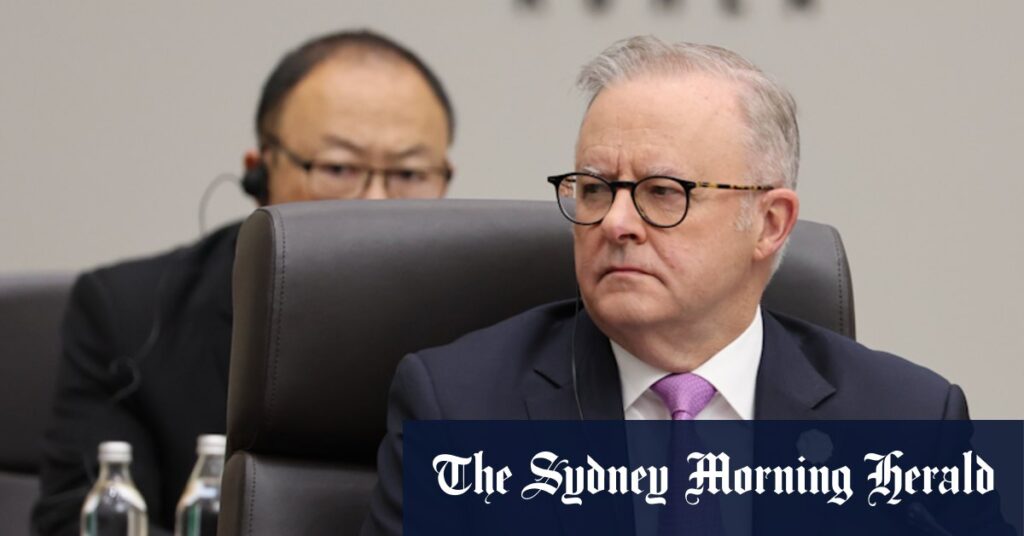
Gyeongju, South Korea: Prime Minister Anthony Albanese has joined Asia-Pacific leaders in advocating for a stable and resilient trading system, signaling to the United States and China the need for a long-term ceasefire in their trade war that has disrupted regional economies. The call was made during the Asia-Pacific Economic Co-operation (APEC) summit, which concluded on Saturday.
In a notable departure from previous years, the 21 APEC member nations did not reiterate their support for a “rules-based multilateral trading system” centered around the World Trade Organisation. This phrase has been a staple of APEC summit declarations for at least four years. Its omission this year reflects the impact of US President Donald Trump’s trade policies, which have seen tariffs imposed on numerous countries as a strategy to secure favorable deals for the US.
Shifting Focus Amidst Trade Tensions
The political leaders emphasized that the Asia-Pacific region is at a “pivotal juncture,” urging efforts to “ensure resilient supply chains.” This statement subtly references both the Trump administration’s tariff regime and China’s threats to disrupt global access to rare earth minerals, essential for critical technologies.
Prime Minister Albanese highlighted the importance of cooperation between the US and China, stating, “It is in the world’s interest for the world’s two largest economies and powers to engage with each other constructively.” His comments came as he prepared to return to Canberra after a series of international engagements.
China’s Role and Future APEC Leadership
China is set to host the next APEC summit in Shenzhen, a decision that Albanese supports despite recent tensions. Beijing only recently lifted its remaining COVID-era economic sanctions on Australian industries. “They’re a major economy. They’re Australia’s major trading partner. Australia supported China hosting APEC,” Albanese affirmed.
This year’s summit marked the end of a busy international week for Albanese, who met with over 20 leaders in Malaysia and South Korea. His itinerary included a dinner with Trump and informal discussions with Chinese President Xi Jinping.
Breakthroughs and Challenges
The APEC summit was overshadowed by a significant meeting between Trump and Xi on its sidelines, where they agreed to pause their damaging trade feud. This conflict has exposed vulnerabilities in key supply chains, with China threatening to impose new export controls on its rare earths industry in retaliation to US tariffs and restrictions on high-tech exports to China.
Canadian leader Mark Carney declared, “The world of expanding ‘rules-based, liberalised trade and investment … is gone,” during a speech to APEC business leaders.
Facing threats from Trump to impose additional tariffs on Canada, Carney invited other nations to strengthen trade ties, announcing a new strategy to double Canada’s non-US exports over the next decade.
China’s Strategic Positioning
With Trump absent from the two-day meeting, Xi capitalized on the opportunity to present China as a champion of free trade norms and a stable alternative to the United States as a trading partner. This strategic positioning comes as the global trade landscape undergoes significant shifts.
The absence of a unified endorsement for the WTO at this year’s APEC summit underscores the evolving dynamics in international trade relations. As the world’s two largest economies continue to navigate their complex relationship, the implications for global markets remain profound.
Looking ahead, the international community will be closely watching how the US and China manage their trade relationship and the broader impact on global economic stability. The upcoming APEC summit in Shenzhen will be a critical moment for assessing progress and setting the stage for future cooperation.





